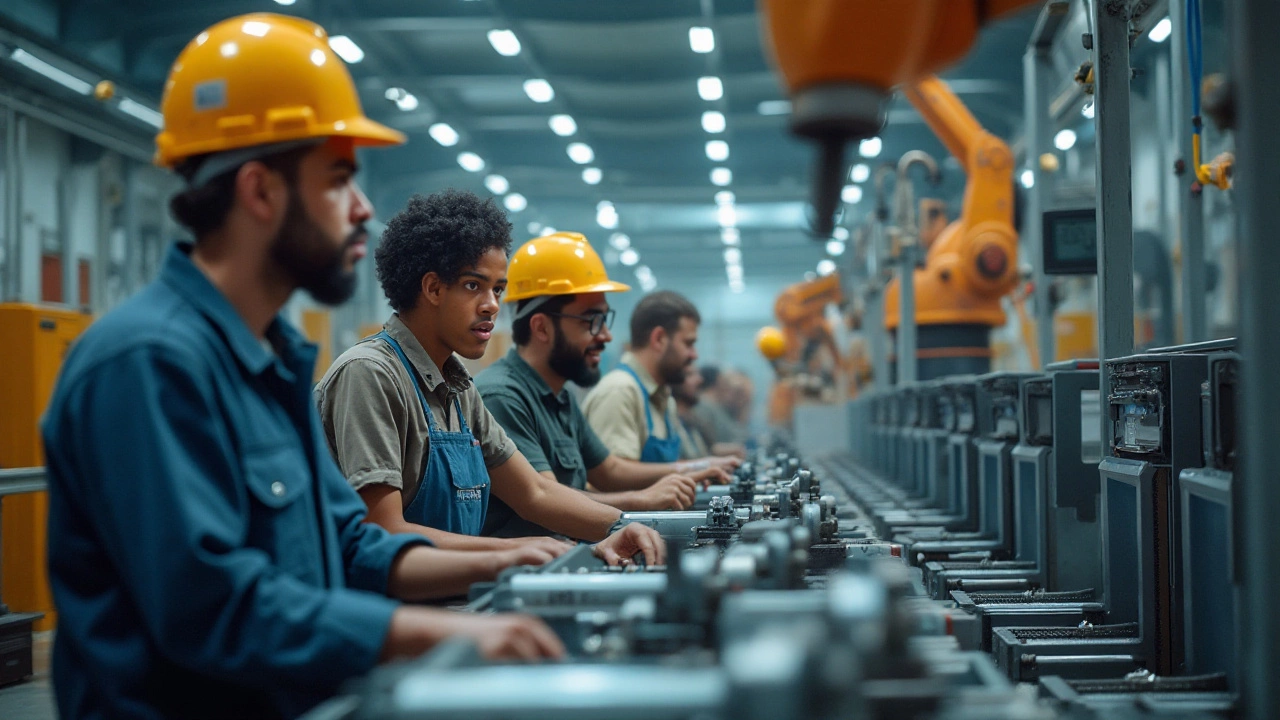Industrial Growth: What’s Driving India’s Factories Forward?
India’s factories are humming louder than ever, but the rhythm isn’t the same everywhere. Some regions are pulling ahead, while others are stuck in red‑tape. In this guide we break down the real drivers of industrial growth – from policy shifts and tech upgrades to the sectors that are finally seeing demand. By the end you’ll know where the biggest opportunities lie and what you can do to tap them.
Key Trends Shaping Today’s Industrial Landscape
First off, digital tools are no longer a luxury. Small‑scale units are adopting simple automation, while big players are moving to Industry 4.0 – sensors, data analytics, and cloud‑based planning. This jump in efficiency cuts waste and boosts output, meaning factories can produce more without massive new building costs.
Second, the government’s Make‑in‑India push is finally hitting the ground. Incentives for renewable energy, easier access to credit, and streamlined land‑use rules have lowered the barrier for new plants. States like Gujarat and Maharashtra are seeing a surge in chemistry and pharma setups, while the north‑east is emerging as a hub for electronics assembly.
Challenges That Still Slow the Momentum
Power cuts remain a headache. Even with new solar projects, many factories still rely on erratic grid supply, forcing them to keep diesel generators running. The result? Higher operating costs and a dent in profitability.
Logistics is another bottleneck. Roads and rail links in some zones haven’t kept pace with production growth, leading to delayed shipments and higher freight charges. Companies that invest in their own warehousing or partner with logistic startups are gaining a competitive edge.
Skilled labor shortages also bite. While there are plenty of workers, finding people who can operate CNC machines or manage digital dashboards is tough. Apprenticeship programs and on‑the‑job training are becoming vital tools for factories that want to stay ahead.
Where the Biggest Opportunities Are
Looking at demand data, a few sectors stand out. The pharma industry, especially in Baddi and Hyderabad, is expanding fast thanks to strong R&D and export incentives. Synthetic textiles in Gujarat are also booming, with big names scaling up production to meet global fashion needs.
Furniture manufacturing is another surprise winner. Rising urbanization and a shift toward sustainable home decor have created a sweet spot for companies that blend design with eco‑friendly materials. If you’re thinking of entering the market, focus on modular, flat‑pack designs that cut shipping costs.
Lastly, low‑competition niches like advanced food processing units and specialty chemicals are attracting investors who want high margins without a crowded field. These areas need technical know‑how but offer solid returns once the process is set.
To sum up, industrial growth in India is a mixed bag of rapid tech adoption, supportive policies, and stubborn hurdles like power and logistics. The winners will be those who blend smart automation with clear strategies for talent, energy, and supply‑chain management. Keep an eye on the emerging sectors mentioned above – they’re where the next wave of factory success is likely to happen.
Top U.S. State for Manufacturing: Insights and Data
The United States encompasses a diverse manufacturing landscape, with certain states standing out due to their economic capabilities and strategic advantage. This article delves into which state holds the title for the most manufacturing in the U.S., examining various aspects such as economic impact, historical context, and government schemes that drive their manufacturing success. By understanding these factors, readers can gain a clearer picture of how regional economies are shaped and what policies might influence future growth. Additionally, insights into workforce and technological advancements offer a comprehensive view of the topic.
Read More